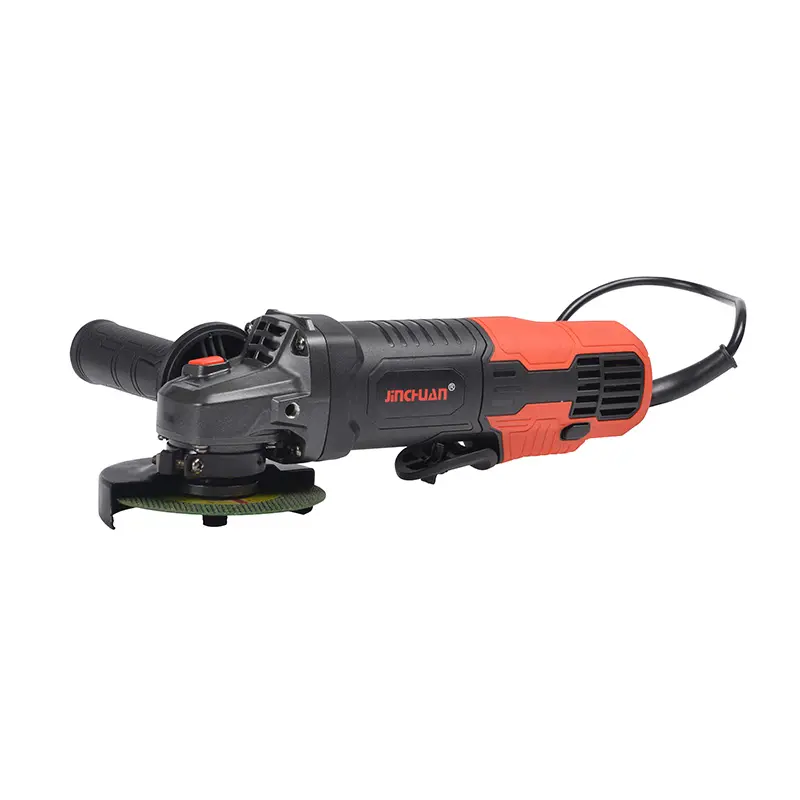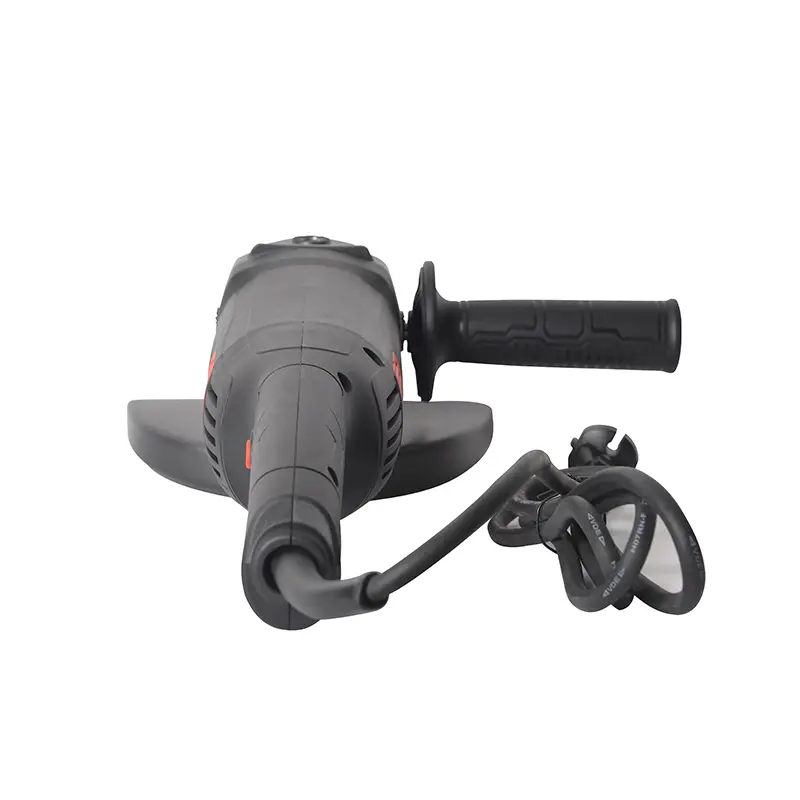In the field of power tools, ultra-thin Angle grinders have become the first choice for many users to handle tasks such as metal grinding and stone cutting, thanks to the flexible operation brought by their compact bodies. It can easily penetrate into narrow Spaces, reducing the burden on the hands from prolonged holding and significantly enhancing the convenience of work. However, the “small” size also brings about thorny problems – the internal space of the machine body is compact, and the heat generated by the high-speed operation of core components such as the motor and gears is difficult to dissipate quickly. If too much heat accumulates, it will not only reduce the operational efficiency of the tool, but also may shorten its service life and even affect the safety of use. The design of heat dissipation holes is precisely the key to solving the heat dissipation predicament of ultra-thin Angle grinders. Through scientific design concepts, even a small body can achieve efficient heat dissipation, ensuring the stable operation of the tool.
First, the heat dissipation pain points of small bodies: Why are heat dissipation holes the key
The body thickness of the ultra-thin Angle grinder has been significantly reduced, and the internal components can only be highly integrated, leaving extremely limited space for heat dissipation. When in continuous operation, the motor’s running generates a large amount of heat, and the friction of gears also releases heat. If this heat cannot be discharged in time, a “heat barrier” will form inside the machine body. In mild cases, it will cause the motor speed to slow down and the grinding and cutting efficiency to decline. In severe cases, high temperatures can accelerate the aging of internal components. For instance, plastic parts may deform due to high temperatures, affecting the fit between parts and even triggering the overheat protection of tools, leading to sudden shutdowns and disrupting the operation process.
What affects the user experience even more is that the heat transfer speed of the smaller body is faster, and the surface temperature of the body is prone to rise rapidly. Especially in the handle area, if the temperature is too high, users will have a distinct burning sensation when holding it. This not only reduces comfort but may also affect the stability of operation due to hand discomfort, increasing the risk of work. Therefore, the heat dissipation holes are not merely “ventilation ports”, but the core design that maintains the performance of the ultra-thin Angle grinder and ensures its safe and comfortable use. The rationality of its design directly determines the heat dissipation effect of the tool.
Second, the layout of the heat dissipation holes: To ensure smooth air circulation
To achieve efficient heat dissipation within a small body, the layout of the heat dissipation holes must follow the law of air circulation to ensure that cold air can smoothly enter the interior of the body while quickly expelling hot air, thus forming a complete heat dissipation path.
Most ultra-thin Angle grinders adopt a “high-low correspondence” layout strategy: air intake holes are set at the lower position at the bottom or side of the machine body, and air outlet holes are set at the higher position at the top of the machine body or close to the motor. This design ingeniously takes advantage of the physical property of hot air rising. After cold air enters through the low-level air inlet, it directly flows through the main heat-generating components such as the motor and gears, absorbing heat and converting into hot air. Then, it naturally rises along the airflow and is discharged through the high-level air outlet, forming a natural convection cycle that does not require additional power. Meanwhile, the air intake holes are deliberately designed to avoid the area where the handle is held and the parts that are easily touched during operation. This not only prevents the user’s hand from blocking and affecting the entry of air flow but also reduces the debris and dust generated during operation from entering the interior of the machine through the air intake holes.
In addition, for areas with the most concentrated heat generation such as motors and gearboxes, some models will adopt a “local reinforcement” layout approach – increasing the number of heat dissipation holes or expanding the area of heat dissipation holes in these areas to allow heat to be dissipated more directly and quickly. This “overall circulation + local reinforcement” layout not only ensures the overall temperature balance of the body but also focuses on solving the heat dissipation problem of high-heat areas, making the heat distribution within the small body more reasonable.
Third, heat dissipation hole structure: Balancing heat dissipation and protection
Ultra-thin Angle grinders often operate in environments with a lot of dust and flying debris. If the structure design of the heat dissipation holes is improper, dust and debris can easily enter the interior of the machine body and adhere to the motor and circuit boards. This not only blocks the heat dissipation channels and affects the heat dissipation effect, but may also cause component failures. Therefore, the structure of the heat dissipation holes needs to strike a perfect balance between heat dissipation efficiency and protective performance.
Firstly, the heat dissipation holes of most ultra-thin Angle grinders adopt an “inclined” or “louver” structure rather than direct straight-through holes. This structure enables smooth airflow to pass through while effectively blocking external debris – metal shavings, sand and stones, etc. that fly during operation will be blocked by the inclined hole wall and difficult to enter the machine body. Moreover, the inclined design can reduce the accumulation of dust. Even if a small amount of dust enters, it will naturally slide down due to gravity and is less likely to clog the holes.
Secondly, the edges of the heat dissipation holes will be rounded. On the one hand, this prevents sharp edges from scratching users’ hands and enhances the safety of use. On the other hand, it can reduce the resistance when the airflow passes through, making the air circulation smoother and further improving the heat dissipation efficiency. Some models also install fine dust-proof nets on the inner side of the heat dissipation holes. This not only prevents fine dust from entering but also does not overly impede the airflow. The dual protection ensures that the interior of the machine is clean and guarantees stable heat dissipation.
Fourth, heat dissipation holes and body material: Synergistic improvement of heat dissipation effect
The heat dissipation effect of the heat dissipation holes also needs to be coordinated with the thermal conductivity of the body material to maximize their function. The body of the ultra-thin Angle grinder is mostly made of high-strength engineering plastics. These materials themselves have a certain degree of thermal conductivity, and the existence of heat dissipation holes enables the heat absorbed by the plastic shell to be dissipated into the air more quickly.
Some models are designed with fine “heat dissipation fins” on the outer shell around the heat dissipation holes. These raised stripes not only enhance the structural strength of the body shell, prevent deformation of the body, but also expand the heat dissipation area, allowing heat to be quickly transferred to the air through the heat dissipation fins. Combined with the air circulation through the heat dissipation holes, a dual heat dissipation mode of “material heat conduction + channel convection” is formed, significantly enhancing the heat dissipation efficiency of the small body. Even after long-term continuous operation, the surface temperature of the machine body can be maintained within a safe and comfortable range, avoiding the impact of high temperature on use.
For users of ultra-thin Angle grinders, the stable operation and comfortable grip of the tool directly affect the work efficiency and experience. Every design of the heat dissipation holes is fully committed to solving the heat dissipation problem of the small body, enabling the ultra-thin Angle grinder to not only maintain its advantages of being compact and flexible but also meet the heat dissipation requirements for long-term operation, making it a reliable and practical helper in power tools.
Post time: Sep-29-2025


